Cazden, et al write about relationships of pedagogy (1996) where there is a much greater social emphasis on learning. While their emphasis on education as primarily a job preparation tool is debatable, the idea that “mentoring, training, and the learning organization” (p.66) is becoming more important is reflected in a new multiliteracy world. It is also pointed out by Cazden et al that multiliteracies, language and meaning are dynamic, that is they are created and recreated by users. Perhaps this is no more true than in Web 2.0 where users of multiliteracies are inevitably the creators of the same content they are making meaning out of. When considering multiliteracies impact on education, Jean Piaget’s theory of constructivism takes on greater importance. As students shape the environment from which they are learning, they build and assimilate the experiences into their own learning.
Multiliteracies are especially important to consider in this internet age. Communication between youth has evolved with tools such as mobile phones, instant messaging, and social networks and these forms of communication are a huge factor in how children make meaning from online experiences and interactions (Bowers et al, 2009). However, before children are able to make meaning out of online experiences, they have to become proficient in the technology itself (Carrington, & Robinson, 2009). For someone to be literate in a social networking site, they first have to be computer literate, or smartphone literate. While many students are already technology literate, some students are not and this creates a need for educators to teach technology literacy. The assumption that all children are digital natives based solely on their age can be detrimental to those that have minimal technological (computer or smartphone in this case) experience due to a variety of reasons. Often media containing multiliteracies requires this understanding of technology.
An interesting area to consider when incorporating multiliteracies into education is video gaming. Video games require the user to understand text, images, and sound all at once. They certainly require a user to be multiliterate, and they might even be considered a new literacy all on their own (Gee, 2007; Payne, 2009). Apart from the text, images, and sound there is also a level of interaction that is necessary to understand and take part in to be literate in video gaming. A gamer must interact with their character or avatar, with the game itself, and with team mates or opponents. Whether they play alone or together, video gaming is a social activity since players need to share information with each other in order to understand the game and to advance (Gee, 2007).
One of the greatest areas of potential that video gaming has towards learning is in its ability to create what Gee has termed ‘affinity spaces’(Gee, 2007). Affinity spaces are places where people who have a common affinity towards something can meet and share information and make meaning. Online sites exist for almost any video game where a player of that game can post results or tips, can search for tips, or just communicate with someone who is interested in the same game. These affinity spaces possess huge learning possibilities, but also require people to be multiliterate. Online affinity spaces quickly require users to learn and follow social norms specific to that group (Shaffer, 2005; Foster, & Mishra 2009) and, therefore, require a social literacy that is unique to each affinity space.
The main reason that affinity spaces have significant educational potential is because members of an affinity space automatically have a passion for that specific topic. Users are engaged. While their interaction and communication may be short in these spaces, they can be extremely expressive (van Manen, 2010). Social media websites are examples of affinity spaces where users can write topically and build meaning with other users. Since users are engaged with the media, the media becomes responsive to them (Finlay, 2010). The more time one spends on a social networking site, the more that site meets the needs of that user. Images, texts, groups become more and more what the user is interested in since they are created by people with common interests.
The importance of relationships in multiliteracy learning is high. Relationships can be strengthened through online interaction and gaming. In order to stress the importance of multiliteracies, educators may consider finding ways to incorporate technologies where students are already experiencing multiliteracies into the classroom. Online gaming provides learning environments that allow for collaborative learning (Bowers et al, 2009; Foster, & Mishra, 2009). Purposefully using games in the classroom has the potential to strengthen students’ literacy in an online, multiliteracy world.
References
Bowers, C., Smith, P.A., and Canon-Bowers, J. (2009). Social Psychology and Massively Multiplayer Online Learning Games. In Richard Ferdig (Ed.), Handbook of Research on Effective Electronic Gaming in Education (pp.702-718). Research Center for Educational Technology Kent State University
Carrington, V., Robinson, M. (2009). Digital Literacies: Social Learning and Classroom Practices. Los Angeles, CA: Sage
Cazden, C., Cope, B., Fairclough, N., Gee. J, et al. (1996). A pedagogy of multiliteracies: Designing social futures. Harvard Educational Review; 66(1). P. 60-92. doi. 0017-8055/96/0200-060
Dobson, T., and Willinksy (2009). Digital Literacy. In David R. Olson, and Nancy Torrance (Eds.), The Cambridge Handbook of Literacy (pp.286-312). New York, NY: Cambridge University Press.
Foster, A.N., & Mishra, P.(2009). Games, Claims, Genres & Learning. In R.E. Ferdig, (Ed.) Handbook of Research on Effective Electronic Gaming in Education (pp.33-50). Hershey, PA: Information Science Reference
Finlay, G. (2010). Implications of Student’s Use of Interactive Social Media. Paper submitted at the University of Alberta.
Gee, J. P., (2007). Good Video Games + Good Learning, Collected Essays on Video Games, Learning and Literacy. New York, NY: Peter Lang Publishing, Inc.
Mikami, A. Y., Szwedo, D. E., Allen, J. P, Evans, M. A., Hare, A. L., (2010). Adolescent Peer Relationships and Behavior Problems Predict Young Adults’ Communication on Social Networking Websites. Developmental Psychology, 46(1), 45-56. doi: 10.1037/a0017420
Payne, M.T. (2009) Interpreting Game Play Through Existential Ludology. In Richard Ferdig (Ed.), Handbook of Research on Effective Electronic Gaming in Education (pp.621-635). Research Center for Educational Technology Kent State University
Shaffer, D.W., Squire, K., Halverson, R., & Gee, J.P. (2005). Video games and the future of learning. Phi Delta Kappan, 87(2), 104-111. Retrieved from http://www.eric.ed.gov/PDFS/ED497016.pdf
van Manen, M., (2010) The Pedagogy of Momus Technologies: Facebook, Privacy, and Online Intimacy. Qualitative Health Research, 20(8), 1023-32. doi: 10.1177/1049732310364990





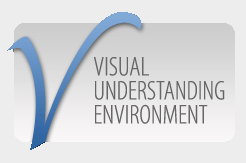




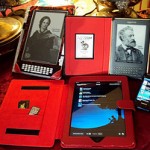



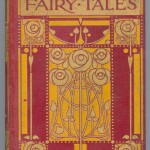
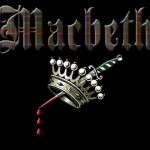
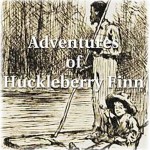 , changed a very objectionable racial slang, which occurs 219 times in the book, to “slave” in the newer editions of the classic earlier this year. They also changed the word “injun” to “Indian”. They reasoned that these alterations will help younger readers comprehend and connect better with the text. These changes, however, were met with a lot of
, changed a very objectionable racial slang, which occurs 219 times in the book, to “slave” in the newer editions of the classic earlier this year. They also changed the word “injun” to “Indian”. They reasoned that these alterations will help younger readers comprehend and connect better with the text. These changes, however, were met with a lot of 

Traumatic Remediations
“Digital technology is turning out to be one of the more traumatic remediations in the history of Western writing.” J. David Bolter, 2001, p.24
I was struck by J. David Bolter’s (2001) casual mention of digital writing technology as a traumatic remediation of writing. This is certainly not Bolter’s only characterization of digital writing technology but nonetheless intriguing. I found myself wondering what was (or continues to be) particularly traumatizing about digital writing technology and why, if in fact we find such remediation traumatizing, do we continue to innovate and remediate? I agree that certain technologies have the ability to traumatize people. Take the introduction of civil aviation technology as remediation of long distance travel. Soaring through the air at ridiculous speeds wearing only a seatbelt is undoubtedly traumatizing. Another example is the invention of the syringe as remediation of intravenous injection and infusion technologies. The smallest needle and the best intentions do not seem to lessen the traumatizing effect of being stabbed. Such technologies may be deemed distressing but does digital writing fall into this category?
The invention of typography and printing en masse would have certainly distressed the 15th century scribe. Not only would scribes be finding themselves out of a job, they would also be finding themselves losing a certain amount of human control of writing that mechanized printing does not afford. Bolter (2001) notes further distancing of human control of writing with the advent of the industrial age of steam and electric printing. Kress (2005) similarly discusses the gains and losses that the remediation of writing brings about including feelings of despair, anger and nostalgia. Though Kress (2005) is describing shifts in multimodal representation and the displacement of writing with images, he emphasises the wider economic, political, social, cultural and technological context in which remediation of the written word takes place – a context not exclusive to present time and key in helping determine the remediation of any technology.
I think we can go even further back in time to the advent of literacy and the traumatic effect of writing on oral cultures of the past. Ong (1982) likens people’s current fears of computers, especially calculators, to Plato’s fears of writing in Phaedrus and The Seventh Letter. Here, Plato suggests that writing weakens the mind. Many parents would suggest the same about calculators weakening their children’s ability to mentally perform simple arithmetic (Ong, 1982). Surely one ought to avoid any tool or technology considered harmful to the proper functioning of the mind! A further potential distressing effect of writing as a technology, like computers, is its unresponsiveness to queries and inability to defend itself – two important affordances of verb communication (Ong, 1982).
Catapulting us back to the present day, we are currently witnessing the traumatising, revolutionising and democratising effects of digital literacy and the emergence of new civic voices in the form of social media literacy and empowerment. Growing media literacy through social, mobile and cms technologies is leading to new and growing opportunities for civic participation by those formerly known as ‘the audience’ (Mihailidis, 2011). The Arab Spring is perhaps one of the most talked about (and no doubt traumatizing) examples of how digital literacy is reshaping citizenship and our role in influencing political and social structures. While the effects of the Arab Spring and other social media based political movements have turned a number of societies (and entire nations) upside-down, what is emerging is a growing body of scholarship and practice aimed at creating media literacy educational initiatives (Mihailidis, 2011).
I think it is suffice to say that unless all remediations of writing are considered traumatizing, none of them are. What is perhaps traumatizing about any innovation or change of our present time is that we are experiencing the change ourselves. We were not around for the mechanization of the written word in the 15th century and therefore do not have first-hand knowledge of any injurious impact print technology first had on the human psyche. Manuscript to print was surely a ‘revolution’ in its day as was the shift from orality to literacy.
It can also be argued that it is not the innovation and now ubiquitous existence of digital writing technologies that is traumatizing. Nor is it Web 2.0, the Internet, hypermedia, hypertext, word processing, mechanized print, pencils, paper, quills, ink, papyrus or any other form of writing technology in the history of literacy. What is in fact traumatizing is the thought of a world without writing – the idea that if Plato had had his way, this “thing” called writing, this “inhuman” and “manufactured product” would not exist today (Ong, 1982).
References
Bolter, J.D. (2001). Writing space: Computers, hypertext, and the remediation of print. Mahway, NJ: Lawrence Erlbaum Associates.
Kress, G. (2005). Gains and losses: New forms of texts, knowledge, and learning. Computers and Composition. Retrieved from http://www.sciencedirect.com/science/article/pii/S8755461504000660
Mihailidis, P. (2011). New civic voices & the emerging media literacy landscape. Journal of Media Literacy Education 3:1, p4-5. Retrieved from http://www.jmle.org/index.php/JMLE/article/view/167/129.
Ong, W. (1982). Orality and literacy: The technologizing of the word. NY: Routledge.